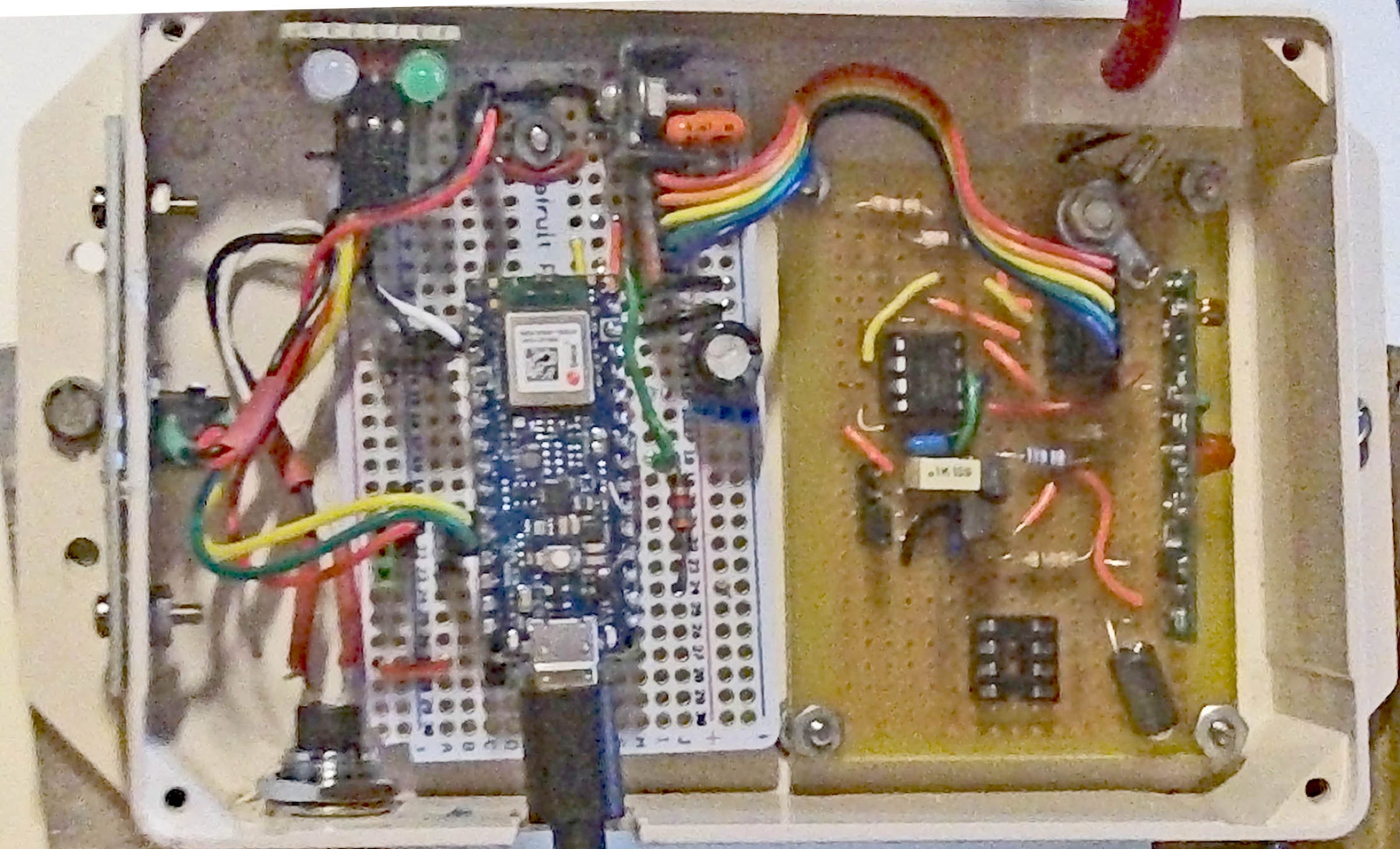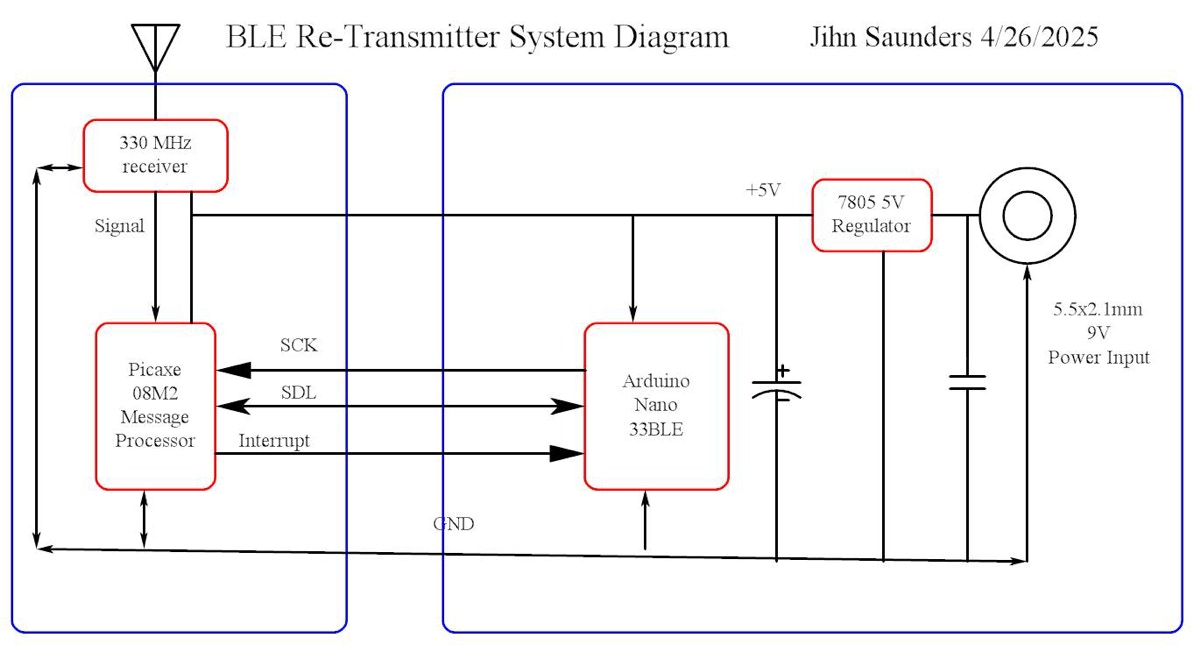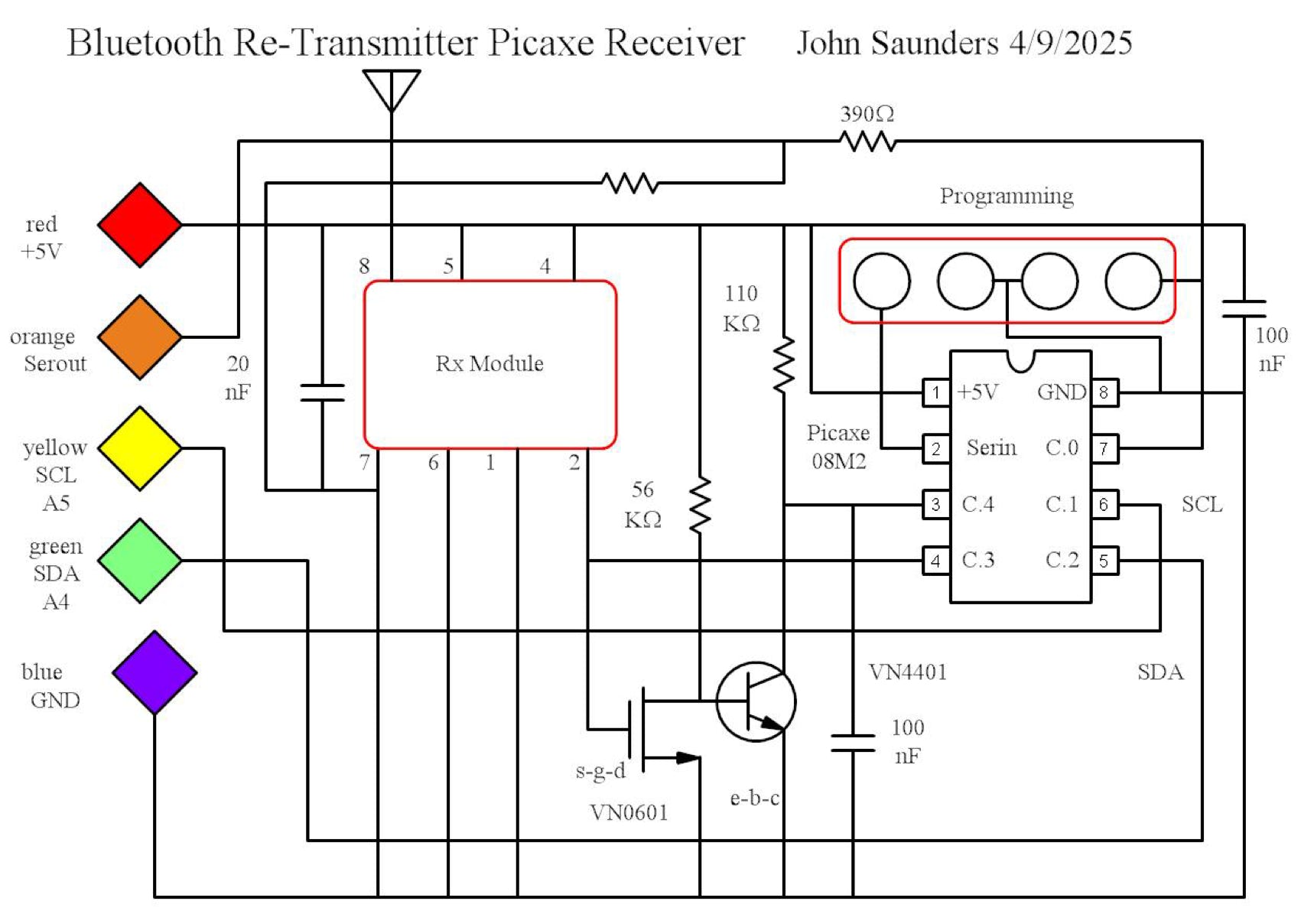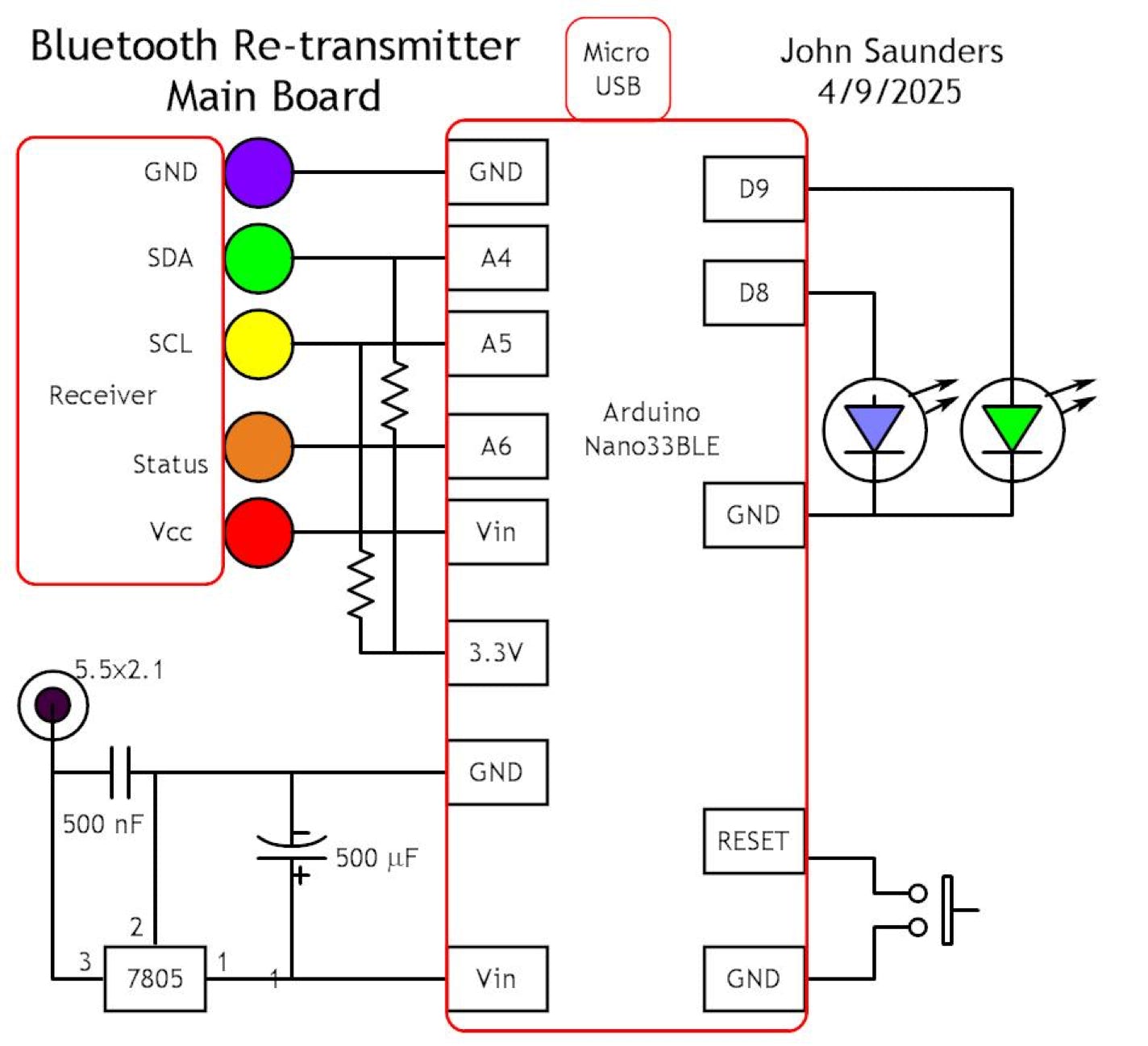This new implementation is intended to avoid the problems of the original, which included a lack of useful applications to show the bluetooth output, and short range. The original used a separate adapter with RS-232 interface and a modem-like “AT” type protocol. Instead this one uses a microcontroller with a built-in bluetooth module which is supported by an Arduino library.
It has a separate receiver which uses the same $5 Radiotronics transmit and receive modules as other projects on my net. It accepts all of the six broadcast streams which a continusly sent a\periodicall at various prates. These originate from these four devices, which are described elsewhere:
- The Solar Sensor.
- The Gas Quality sensor.
- The LED Matrix Clock.
- The Garaage Fan control.
The RF signals use AMK (ON-OFF) keying in the 433.92 MHZ ISM band, which may have a range up to 1 Km.The main problem to be solved is the frequent bursts from other sources, and the continual noise pulses from the receiver. A Picaxe 08M2 microprocessor and a integratoion and dump circuit extract valid signal from the interference and noise and sends the cleaned-up messages to the Arduino via an I2C link.
The Arduino stores the current instance of each message, adds decimal points, labels and units, and sends all each minute to a paired app on a cellphone, iPad, or MacMini.


The receiver uses a receive module which needs a regulated 5V, so this is also used for the Picaxe and the’Vin” input to the Arduino Nano33BLE, which is a 3.3V device.
Receiver

The 4 sockets at the top are for programming via an external USB to RS-232 adapter and protection circuit. The Picaxe uses the opposite polarity than Arduino.
In service a jumper is required across the left two contacts.
The NPN transistor is an integrator whose output only reaches the Picaxe threshols during the 20 ms prepulse which precedes each RF signal transmission. At other tines the MOSFET quenches the integration before the threshold is reached.
The prepulse is not needed on the I2C transmission.
Main Board

The Main Board uses a Adafruit “Perma-Proto” which has traces for an 0.6 IC and 5 plated-through interconnected hoes each side.
The nano33BLE plugs into socket strips.
Two 5K ohm pull-ups isolate the 5V receiver from the 3.3V nano33BLE.
The blue LED shows incoming messages, while the green LED shows bluetooth pairing.
The 7805 regulator has a small heatsink, bt it is advisable to avoid input supply voltages more than 10V.
Both theUSB and coaxial inputs should not be active simultanously.